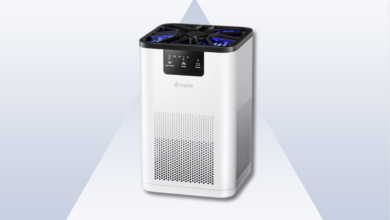Raise the butt: Glute bridge, the perfect exercise to strengthen the core and raise the gluteus

He
bridge exercise strengthens the glutes, abs, and hamstrings (back of the thigh) while improving the core. It’s easy to add to strength training, can be used as a warm-up, and is even a good rehab exercise to increase strength.
core and spine stabilization.
It is a very simple exercise and all you need is an open space where you can exercise calmly. Lie on your back using
a mat if you have one. Rest your hands at your sides, bend your knees, and place the bottoms of your feet on the floor, under your knees.
Squeeze your abdominal and gluteal muscles by pushing your lower back into the floor. Raise your hips to create a
straight line from knees to shoulders. Squeeze your core and pull your belly button in toward your spine. Hold the position for 20-30 seconds before lowering your hips back to the starting position.
Benefits of the gluteal bridge exercise
If you’re looking for a move to add to your strength routine that will work your core and butt effortlessly, the basic bridge is a great starting point. This exercise also helps
strengthen the erector spinaewhich runs along the back from the neck to the tailbone.
A basic bridge stretches the stabilizers of the posterior chain, including the
hip abductors, gluteus maximus, and hamstrings. As antagonistic stabilizers for the bridge movement, the rectus abdominis, obliques, and quadriceps are worked while maintaining stability.
Power and strength will generally improve as these muscle groups get stronger. A strong core too
it will improve your posture and can help relieve lower back pain. In fact, as long as you’re in good form, bridging exercises are generally safe for people with chronic back problems and can even help manage pain.
Woman doing sports/PEXELS
Other Glute Bridge Variations
There are a few different ways to do a bridging exercise, depending on your fitness level and your exercise goals. If you prefer to do the basic bridge with some support underfoot, try the
elevated bridge. For this variation, you will need a stabilization ball.
Begin in the starting position for the basic bridge with the ball at your feet. Place your heels on top of the ball.
Raise your pelvis as you would in the basic bridge. Keep your core engaged throughout the movement and hold the position for 20-30 seconds, as in the regular bridge.
Another version is the
straight leg bridge. While getting your legs straight instead of your knees bent is often a challenge, adding an exercise ball to support your legs can make it a bit easier. Remember to keep your abdomen contracted and your arms at your sides to support your weight and avoid back strain.
If you want to take the basic bridge up a notch, try the
one leg bridge, either with or without an exercise ball. This option activates the trunk muscles better. Begin in the starting position of a basic bridge and lift your left leg up as you lift your pelvis. Stay like this, and then lower your hips toward the floor, leaving your leg raised. Switch to the right side.
Women training/PEXELS
And you also have the
single leg bridge with lowered leg. This exercise adds even more intensity to the single leg bridge by incorporating movement of the legs while the pelvis is in the elevated position. Begin in the starting position of a basic bridge and lift your left leg up as you lift your pelvis. Lower your left leg until it almost touches the floor while keeping your pelvis in the elevated position. Raise your leg up and hold before lowering your hips toward the floor. Switch to the right side.




